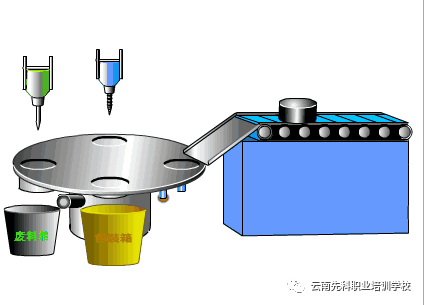
From the composition of PLC, besides the CPU, memory, and communication interface, what other interfaces are directly related to the industrial site? Please explain their main functions.
(1) Input interface: Accepts signals from controlled devices and drives the internal circuit to connect or disconnect through optocoupler devices and input circuits.
(2) Output interface: The execution result of the program is output through the optocoupler device and output components (relay, thyristor, transistor) of the output interface, controlling the connection or disconnection of external loads.
What are the basic units of PLC composed of? What is the role of each part?
(1) CPU: The core component of PLC, directing various tasks of the PLC, such as accepting user programs and data, diagnosis, and program execution;
(2) Memory: Stores system and user programs and data;
(3) I/O interface: The connecting component between PLC and the controlled objects in industrial production, used to receive the signals from controlled devices and output the execution results of the program;
(4) Communication interface: Exchanges information with other devices such as monitors and printers through the communication interface;
(5) Power supply.
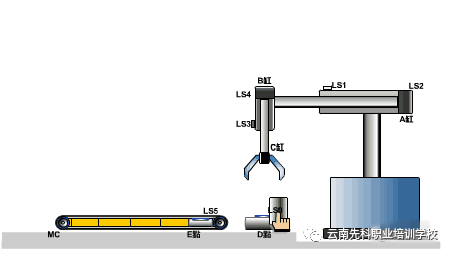
What types of PLC digital output interfaces are there? What are their characteristics?
Thyristor output type: Generally can only carry AC loads, fast response speed, high action frequency;
Transistor output type: Generally can only carry DC loads, fast response speed, high action frequency;
Relay output type: Generally can carry both AC and DC loads, but has a longer response time and lower action frequency.
What types of PLC are there based on structural form? What are their characteristics?
(1) Integrated type: Combines CPU, power supply, and I/O components in one chassis, compact structure, low price, generally used in small PLCs;
(2) Modular type: Divides the PLC into several separate modules, allowing for flexible configuration and easy expansion and maintenance, generally used in medium and large PLCs. Modular PLC consists of a frame or baseboard and various modules, with modules installed in the sockets of the frame or baseboard.
(3) Stacked type: Combines the features of both integrated and modular types, with CPU, power supply, and I/O interfaces also as independent modules connected by cables, making the system both flexible in configuration and compact in size.
What is the scanning cycle of a PLC? What factors mainly influence it?
The scanning process of a PLC includes five stages: internal processing, communication services, input processing, program execution, and output processing. The time required to scan once through these five stages is called the scanning cycle.
The scanning cycle is related to CPU operating speed, PLC hardware configuration, and the length of user programs.
How does a PLC execute user programs? What stages does the execution process include?
A PLC executes user programs through a cyclic scanning method, which includes the stages of input sampling, program execution, and output refreshing.
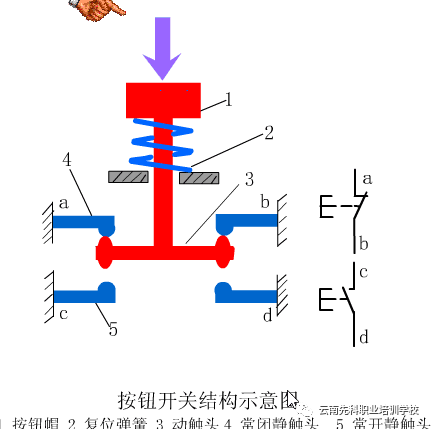
What advantages does a PLC control system have over a relay control system?
(1) In terms of control methods: PLC implements control through programming, making it easy to change or add control requirements, and PLC contacts are unlimited;
(2) In terms of working methods: PLC operates in a serial manner, enhancing the system’s anti-interference capability;
(3) In terms of control speed: PLC contacts are essentially triggers, with execution times in the microsecond range;
(4) In terms of timing and counting: PLC uses semiconductor integrated circuits as timers, with clock pulses provided by crystal oscillators, ensuring high delay accuracy and wide range. PLC has counting functions that relay systems do not possess;
(5) In terms of reliability and maintainability: PLC uses microelectronic technology, ensuring high reliability, and its self-diagnostic functions can promptly detect issues.
Why does a PLC exhibit output response lag? How can I/O response speed be improved?
Because PLC uses a centralized sampling and centralized output cyclic scanning working method, the input status can only be read during the input sampling stage of each scanning cycle, and the execution results of the program can only be sent out during the output refreshing stage. Additionally, delays in input and output, as well as the length of user programs, can cause output response lag.
To improve I/O input sampling and output refreshing, or to directly sample inputs and refresh outputs, as well as using interrupt I/O and intelligent I/O interfaces, among other methods.
What types of internal soft relays are there in Siemens PLC series?
Input relays, output relays, auxiliary relays, status registers, timers, counters, data registers.
How to choose a PLC?
(1) Model selection: Consider structural form, installation method, functional requirements, response speed, reliability requirements, and model uniformity;
(2) Capacity selection: Consider the number of I/O points and user storage capacity;
(3) I/O module selection: Includes the selection of digital and analog I/O modules, as well as special function modules;
(4) Selection of power modules and programming devices, among other equipment.
Briefly describe the characteristics of the centralized sampling and centralized output working method of PLC. What are the advantages and disadvantages of adopting this working method?
Centralized sampling: Within a scanning cycle, input status sampling only occurs during the input sampling stage, and the input end will be blocked during the program execution stage.
Centralized output: Within a scanning cycle, the output status is only refreshed during the output refreshing stage, where the output image register status related to the output is transferred to the output latch, while in other stages, the output status remains in the output image register. This working method can enhance the system’s anti-interference capability and improve reliability but can cause lag in PLC input/output responses.
What kind of working method does a PLC adopt? What are its characteristics?
A PLC adopts a centralized sampling, centralized output, and cyclic scanning working method.
Characteristics: Centralized sampling means that within a scanning cycle, PLC samples the input status only during the input sampling stage, blocking the input end during the program execution stage.
Centralized output means that within a scanning cycle, PLC only transfers the output image register status related to the output to the output latch during the output refreshing stage, refreshing the output interface, while in other stages, the output status remains in the output image register.
Cyclic scanning means that a PLC needs to perform multiple operations within a scanning cycle, executing them one by one in a time-sharing manner, repeating this process continuously.
What are the main components of an electromagnetic contactor? Briefly describe the working principle of an electromagnetic contactor.
An electromagnetic contactor generally consists of an electromagnetic mechanism, contacts, an arc extinguishing device, a release spring mechanism, a bracket, and a base. The contactor operates based on electromagnetic principles: when the electromagnetic coil is energized, the coil current generates a magnetic field, causing the static iron core to produce electromagnetic attraction to pull the armature, driving the contacts to operate, opening the normally closed contacts and closing the normally open contacts; these two actions are linked. When the coil is de-energized, the electromagnetic force disappears, and the armature falls under the action of the release spring, restoring the contacts, i.e., the normally open contacts open and the normally closed contacts close.
Briefly describe the definition of a Programmable Logic Controller (PLC).
A Programmable Logic Controller (PLC) is an electronic device designed for digital operation in industrial environments. It uses programmable memory to store instructions for executing logic operations, sequential operations, timing, counting, and arithmetic operations, and can control various types of machinery or production processes through digital or analog inputs and outputs.
PLCs and their related peripheral devices should be designed according to the principles of easy integration into an industrial control system and easy expansion of their functions.
Briefly describe the differences in working principles between PLC systems and relay contactor systems.
The components are different;
The number of contacts is different;
The methods of implementing control are different.
Image and text source from the internet, if there is infringement, please contact us for deletion!


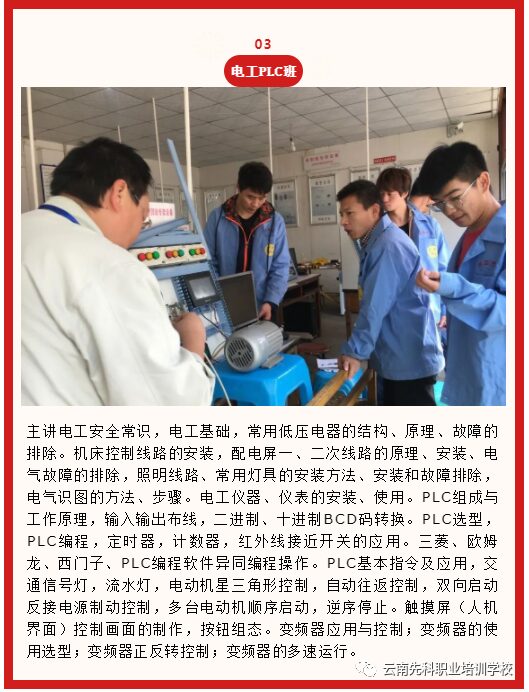
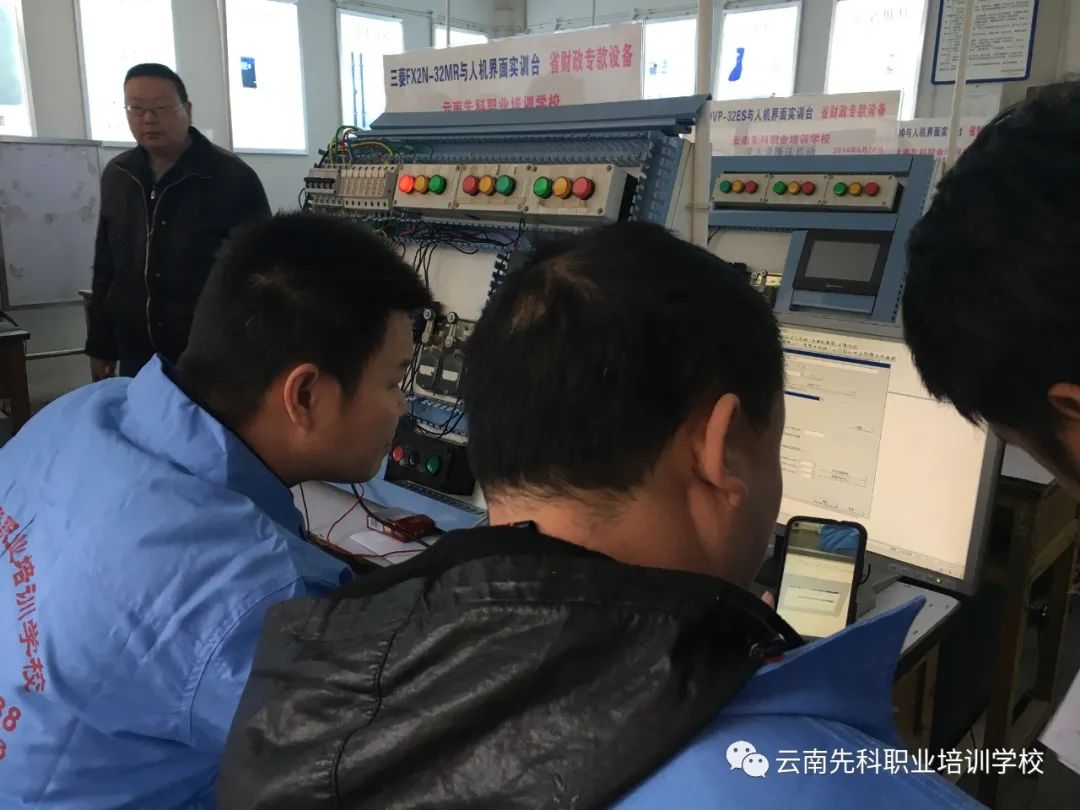

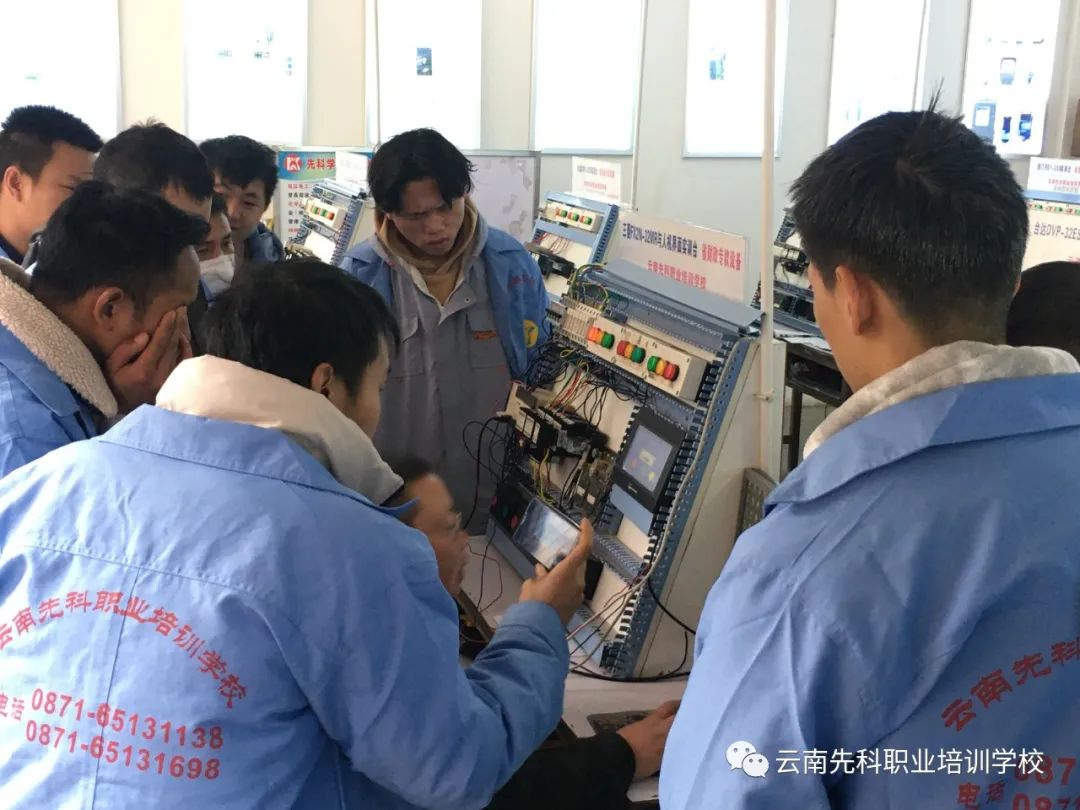
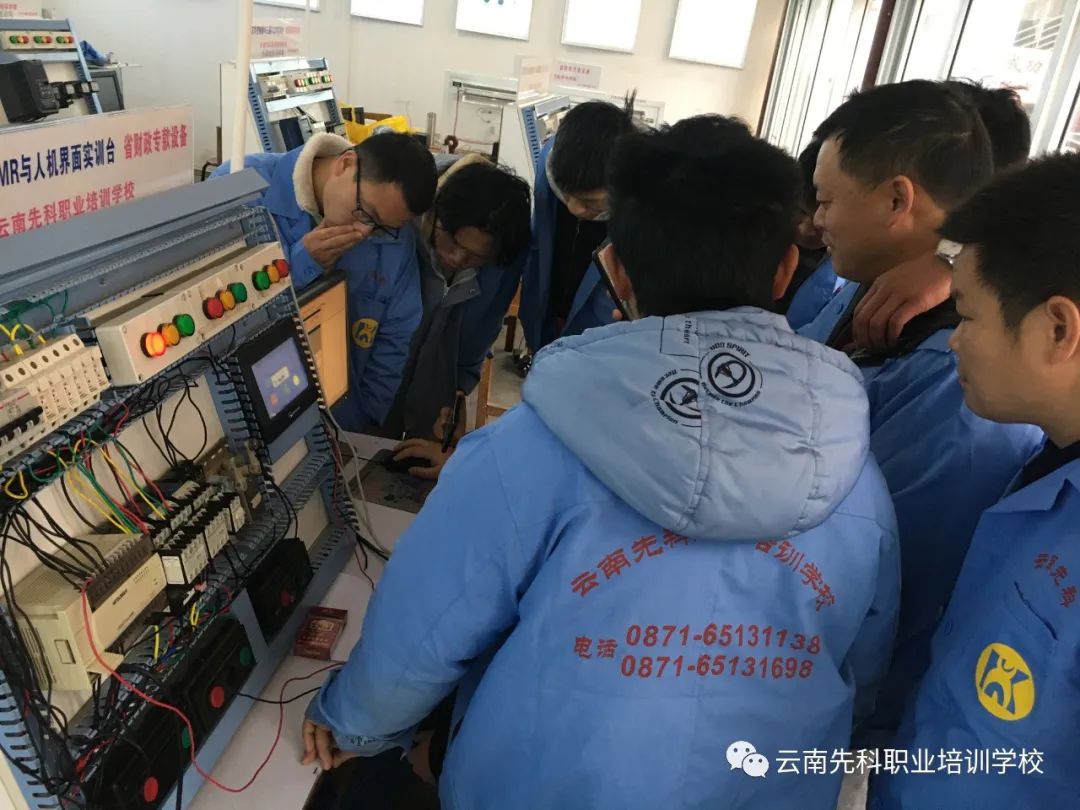
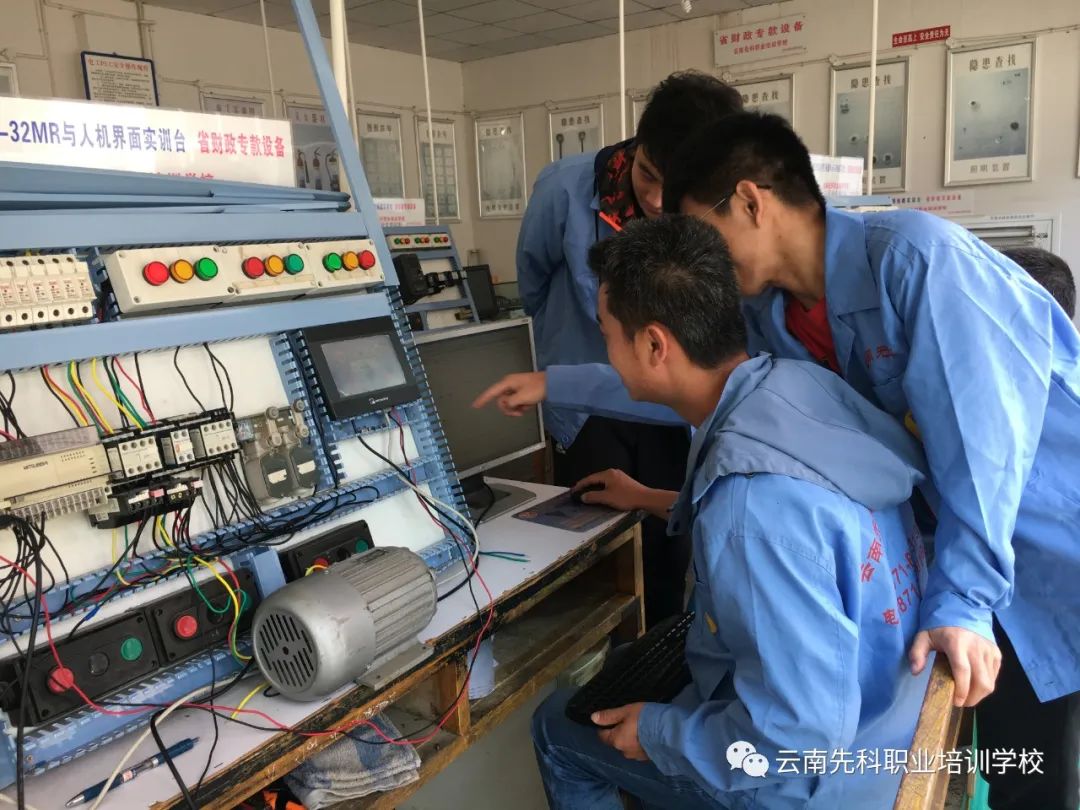
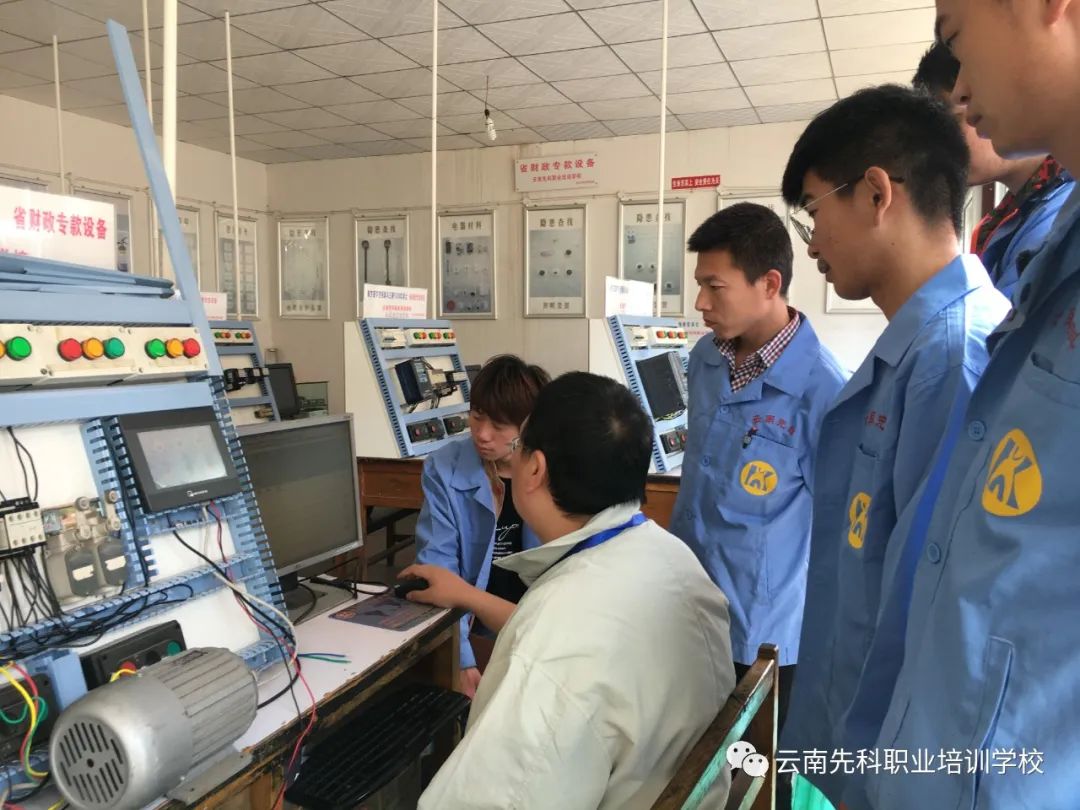
Year-round enrollment, classes open every month; cyclical teaching, learn anytime; unified accommodation, job recommendations!
1. Registration time:
Register anytime, on-site registration, WeChat registration, QQ registration are all acceptable.
2. Registration conditions:
(Beginner Training Class)
1. No age, gender, or regional restrictions;
2. No educational restrictions;
3. Must meet corresponding physical conditions.
(Certification Training Class)
1. Aged 18-60;
2. Middle school education or above;
3. Must meet corresponding physical conditions.
3. Registration hotline:
Contact number: 0871—65131138 65131698
QQ: 273327602
Address: No. 485, Tanhua Road, Kunming City
Website: www.ynxk.com
